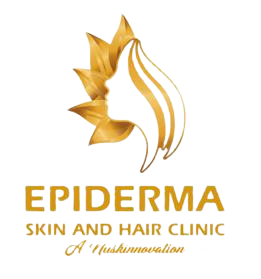
Vitiligo is known to be an asymptomatic depigmentation of macules and patches. There are few facts known about itching in vitiligo. Itch in vitiligo is rare. It is believed that vitiligo is a symptomless dermatosis that is caused due to a multifactorial, polygenic disorder, with complex pathogenesis. Here, we understand what itchy skin means for a patient with vitiligo by our Best Dermatologists in Bangalore.
Is itching normal in Vitiligo?
Vitiligo is said to be asymptomatic. Studies have shown that itchiness is an uncommon symptom and reported in only 10-29% of vitiligo patients based on its isoform. Itchy skin in vitiligo hampers the quality of life in patients with day and night irritation. The social stigma in addition to the distraction caused by vitiligo creates psychological suffering in vitiligo patients.
Does any Vitiligo type cease to be itchy, or is it due to something else?
The itchy feeling in vitiligo patients can disappear on its own. It is a sign that the condition is less active. There is still no clear association between the development of vitiligo and incidents of itchiness. But, itchiness indicates effective vitiligo and is found in patients with Koebner type IIB. The Koebner phenomenon is the onset of vitiligo lesions at a previously unaffected or an injured area of the skin caused mainly due to intravenous injury.
Are there any factors that can make Vitiligo itchy or worsen it?
Tingling in vitiligo is often provoked due to factors like a hot environment, dry skin, and sunlight. The changing skin surface lipids, pH, and cytokine levels impact the agitation of itching. The skin lipids are let out by the outermost layer of the skin called the epidermis, which interprets as a hydrophobic barrier that stops water and electrolyte movement along with microorganism capture. These functions occur due to the naturally acidic skin pH. Surface lipids and skin pH can be modified with the help of different skin products, such as the harsh hand soaps that wash away the lipids leaving the skin irritable and dry.
Cytokine levels may be controlled by various immunosuppressive drugs and allergens. Their molecules moderate the immune response, and its imbalance is responsible for vitiligo pathogenesis because of its autoimmune identity. Vitiligo is an autoimmune disorder where patients are at a higher risk of developing allergies than healthy individuals. Thus, their cytokine levels rise frequently, which triggers itching. Its manifestation can get adverse due to sleeplessness, stress, and irritant dermatitis.
Can the itchiness in Vitiligo be treated?
Topical corticosteroids are known to be the most effective treatment for itchiness, along with some medications like oral antihistamines and anti-inflammatories. Emollients present in topical medications and UV light treatment help relieve itch to some extent. Cold showers help ease itch, but these home remedies sometimes alleviate or aggravate the symptom depending on the person. On a few occasions, vitiligo gets resolved by itself, eliminating the symptoms thoroughly.
This article is contributed by our best dermatologists in Bangalore Dr. KC Dharam Kumar and Dr. Abhilasha MD.
Find out the most popular searches of “Vitiligo”:

